What are the different types of car phone holder?
How to pick the right phone holder for your car and handset
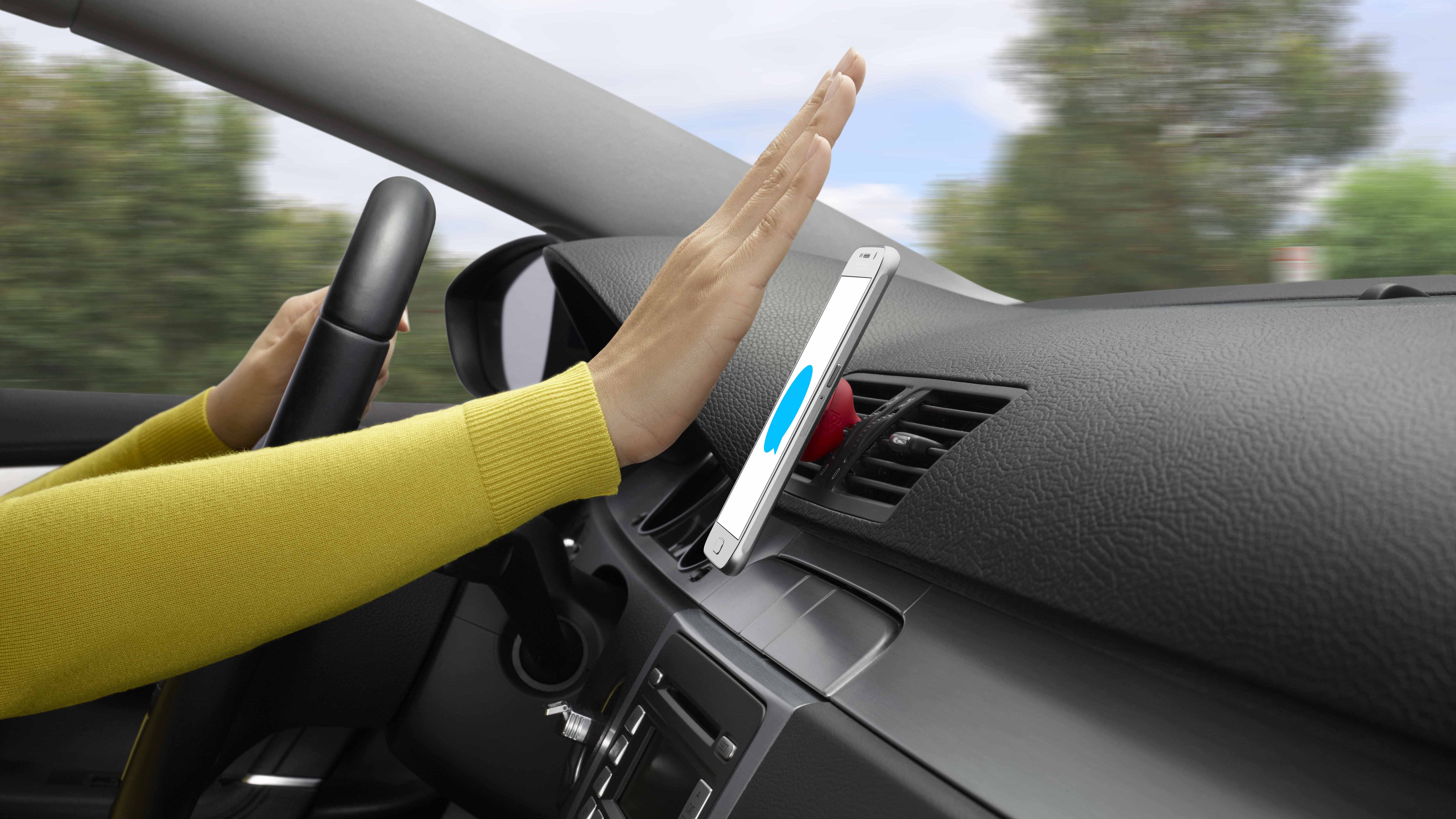

Not all car phone holders are made equal, that's why you need to take the time to make sure you're buying the best car phone holder for your needs. Despite them all performing the same basic task they go about it in different ways. Some use a suction cup while others cling to an air vent. Some grip your phone, others snap into place with magnets.
Deciding on the type of phone holder to get comes down to both your car and your phone. Key factors are the amount of space you have, where you want the phone to be, where the car’s USB ports are located, the type of air vents your vehicle has and the type and size of your phone.
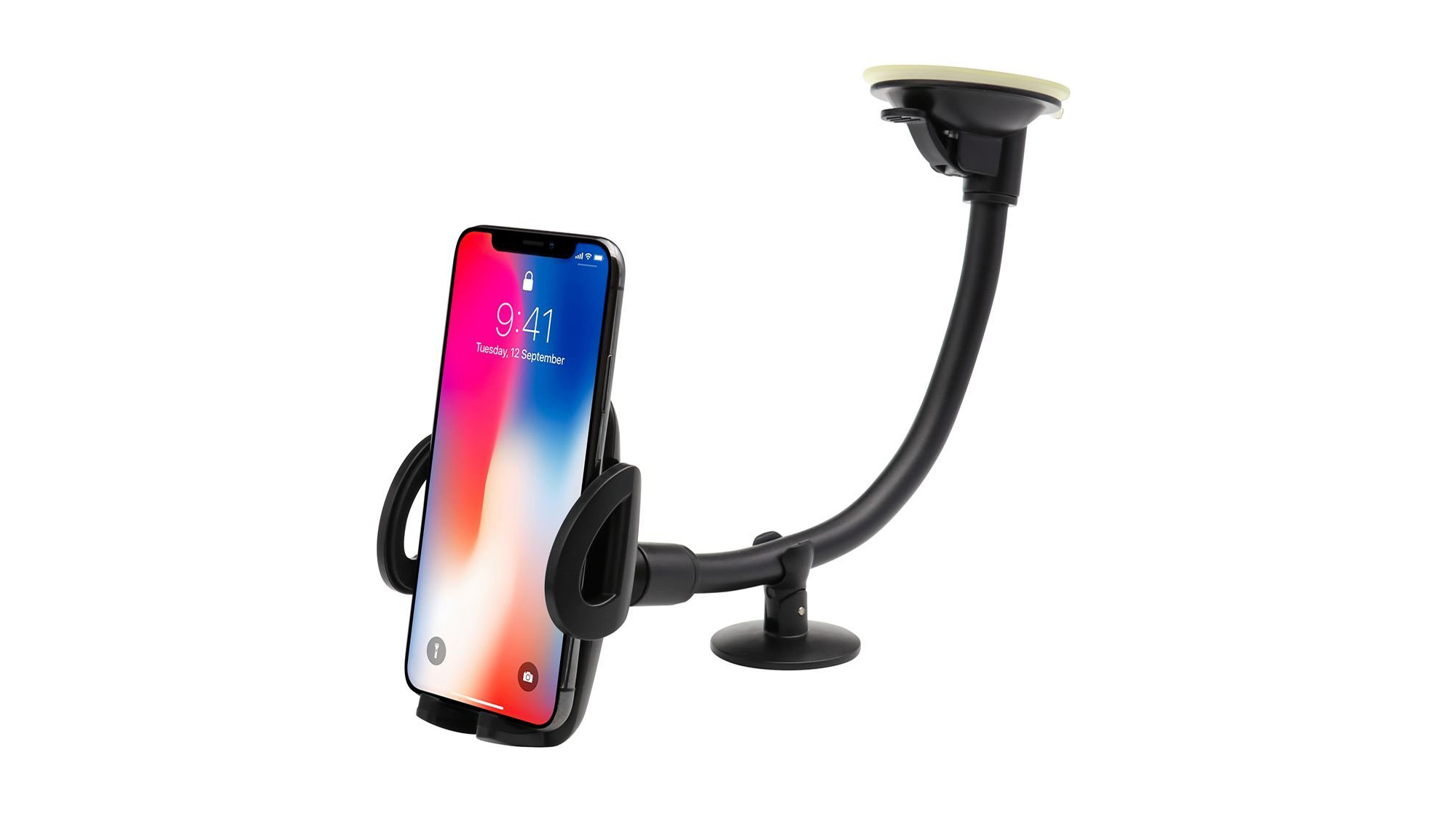
Windscreen phone mount
The primary benefit of a windscreen mount suction cupped to the glass is flexibility. These mounts often use flexible arms to help you position your phone in exactly the right place. Some also have a foot to rest the arm on the dashboard, preventing it from wobbling around too much as you drive.
Those without flexible arms use a hinge or two, each with a screw lock, to help angle your phone just right. These mounts are key and easy to install and remove, and work best when located towards the edge of the windscreen, where they can be tucked away in the corner of your car and don’t obscure your view ahead.
The downside of suction cup mounts is how they can take up a lot of space. This isn’t a problem in larger vehicles, but for much smaller cars with compact cabins and windscreens close to the driver, the phone can be awkwardly close to the steering wheel.
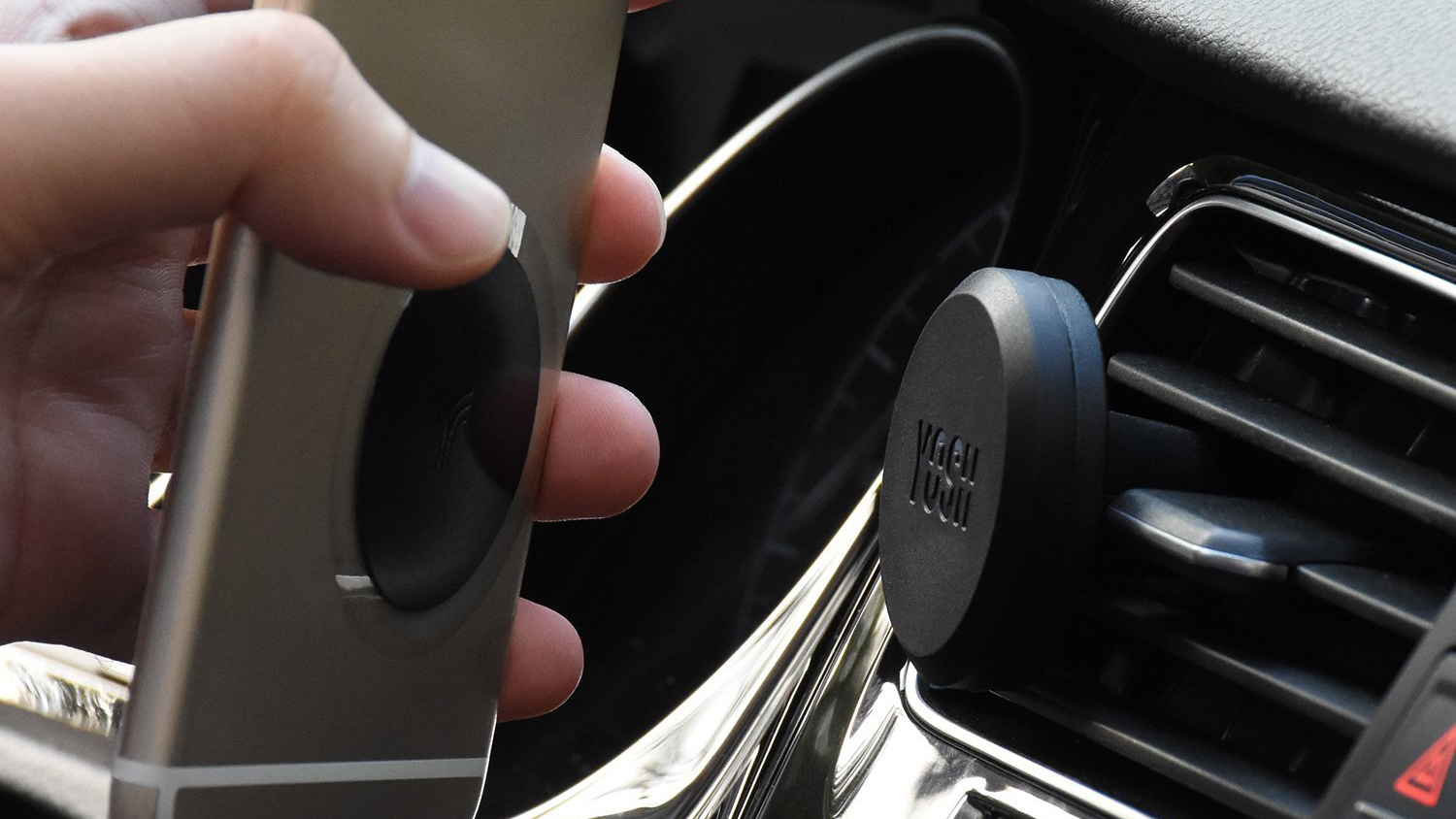
Air vent phone mount
The second option is the air vent mount. These clip to the dashboard air vents of your car and are generally much smaller than windscreen suction cups. These work best with air vents that have flat and horizontal vanes, instead of circular ones. If your car has unusually shaped air vents, then this mount won’t be the best option for you.
Compact and convenient, these holders position your phone slightly lower than a windscreen mount, and of course, your phone will partially obscure the vent you attach it to. There is also a chance that large phones might obstruct other parts of the dashboard too, and heavier phones can pull on the vent, causing the phone to face downwards slightly.
Get all the latest news, reviews, deals and buying guides on gorgeous tech, home and active products from the T3 experts
Dashboard suction cup phone mount
Instead of sucking to the windscreen, some car phone holders are designed to grip the dashboard instead. They come with a tacky rubber pad that sits on your dashboard, and to which the phone holder’s suction cup is applied. The rubber pad doesn’t leave any residue behind and can be removed without effort, making this a good option if you’d rather not have a suction cup stuck to the windscreen. These mounts let you position your phone lower down, suspended from the dashboard and away from both the screen and steering wheel.
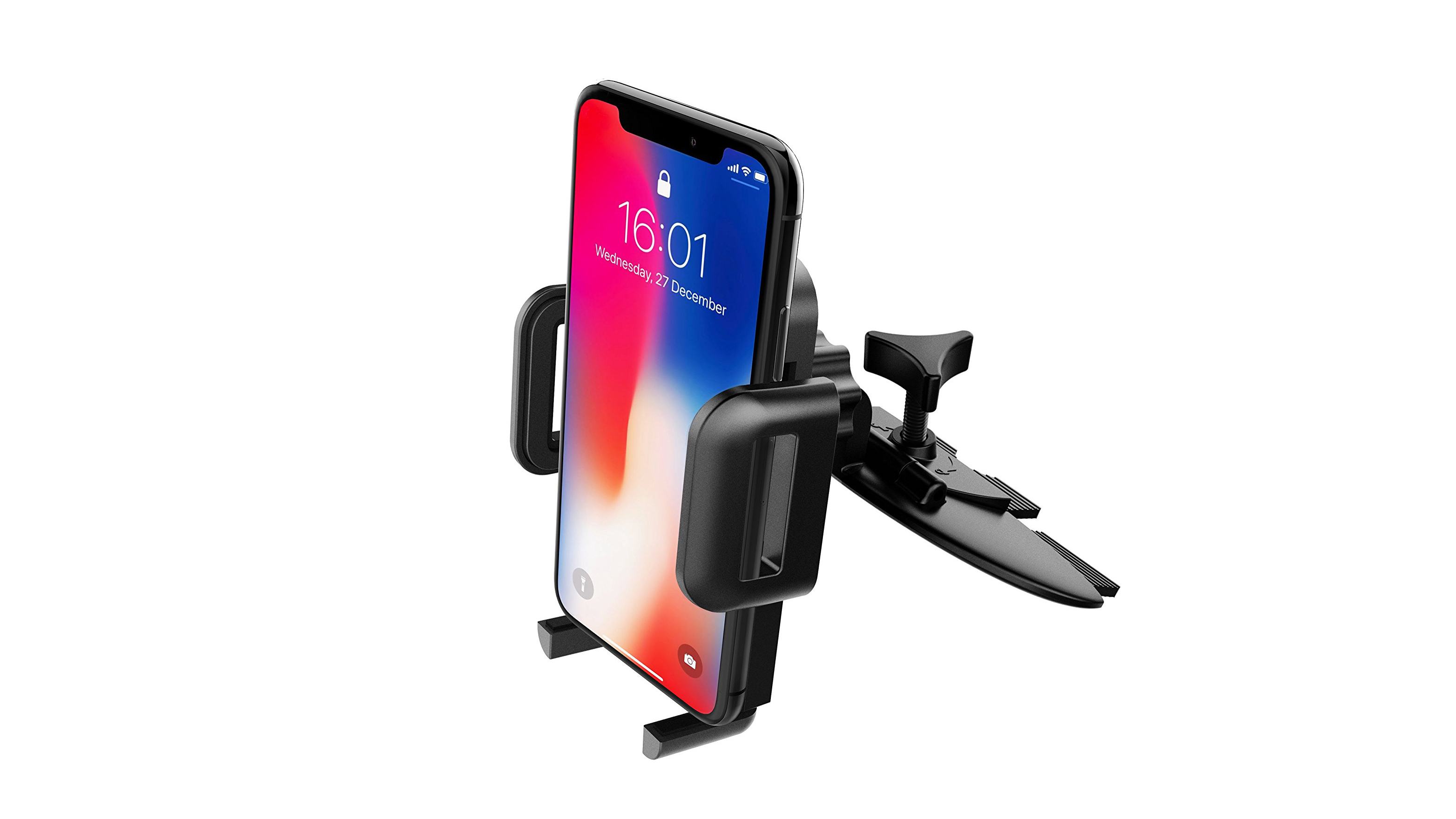
Grip-style phone holder
Once you have decided on how the holder fits into your car, it’s time to pick how it attaches to your phone. The most popular option here is the grip, which often uses a spring-loaded clamp to tightly hold the phone in landscape orientation. These grips are usually adjustable enough to cater for phones of all sizes, and it takes a matter of seconds to secure and remove your handset.
Other types of grip include a section for the phone to rest on, as well as being gripped from the sides, and some have four arms that adjust to help you find the perfect fit.
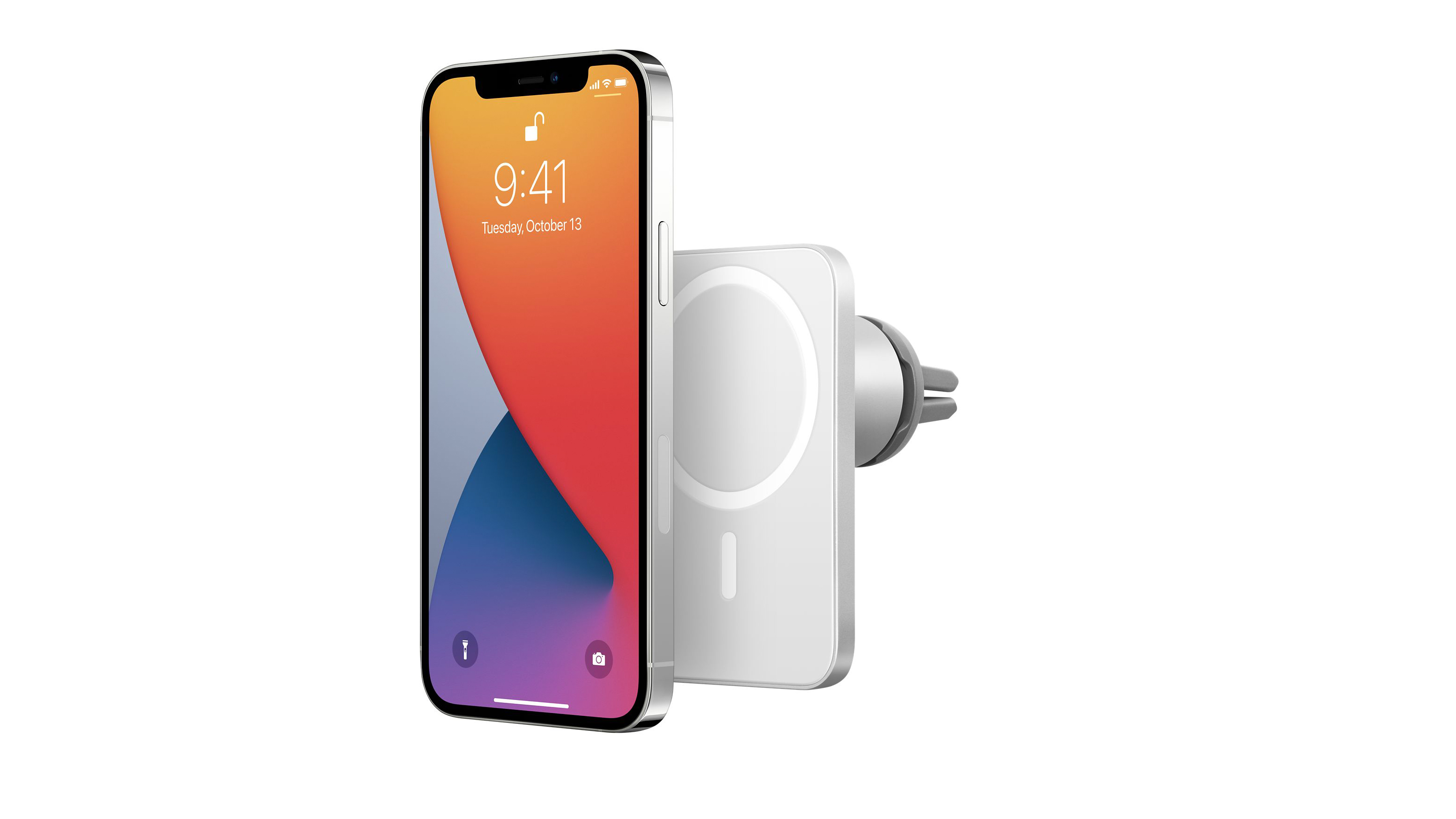
Magnetic phone holder
Grip-style holders work well, but they can be fairly large and unsightly. For a far sleeker look, try a magnetic mount. These often use air vent mounts to attach to your car, then snap to the back of your phone using a strong magnet. Because your phone isn’t magnetic (we’ll get to Apple’s MagSafe in a minute), these holders come with an adhesive magnetic pad that can be stuck to the back of your phone, or phone case.
We admit that a magnetic pad stuck to the back of your phone doesn’t look great, but in some cases, it can be slipped inside the back of your phone case and still stick strongly enough to the magnetic car mount. Whichever approach you take there, you have a very quick and easy way to mount your phone in the car; just move it towards the mount and it’ll snap magnetically into place.
These mounts also make it easy to hold your phone in landscape orientation if you prefer.
Lastly, and as an evolution of the magnetic phone holder, we have Apple’s MagSafe system. Introduced with the iPhone 12, MagSafe uses magnets to attach the handset to charges, cases and other accessories. A few options are slowly coming to market, like the Belkin Car Vent Mount Pro, but that mount doesn’t offer a way to charge your phone at the same time.
Other options integrate Apple's own MagSafe charger so that you can power your iPhone while it’s in the car.
As with all of these car phone holders, you will need to think about how your phone is powered. Often this will mean a USB cable dangling from the phone and plugged into wherever the car’s USB ports are. Depending on their location, you might want to change the location (and type) of phone holder you buy.
Not take your new-found knowledge and check out T3's buying guide to the best car phone holder.
Liked this?
Alistair is a freelance automotive and technology journalist. He has bylines on esteemed sites such as the BBC, Forbes, TechRadar, and of best of all, T3, where he covers topics ranging from classic cars and men's lifestyle, to smart home technology, phones, electric cars, autonomy, Swiss watches, and much more besides. He is an experienced journalist, writing news, features, interviews and product reviews. If that didn't make him busy enough, he is also the co-host of the AutoChat podcast.
